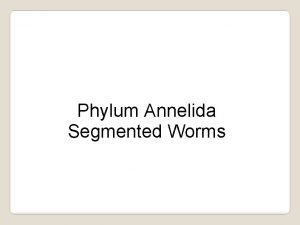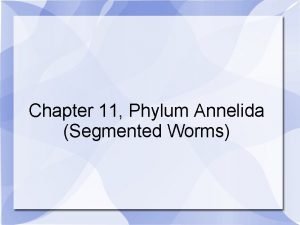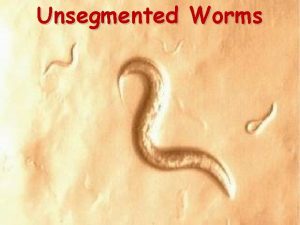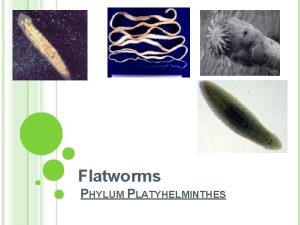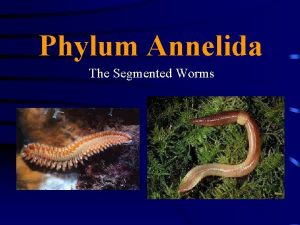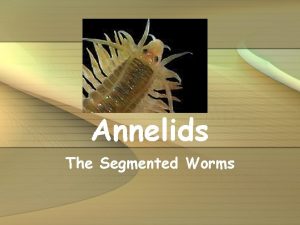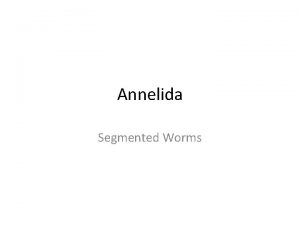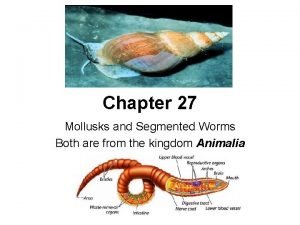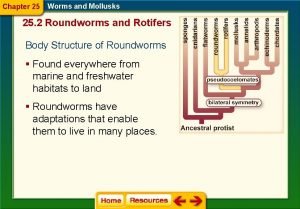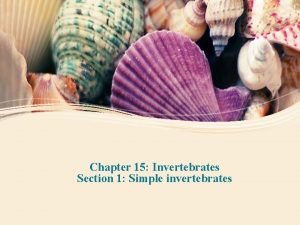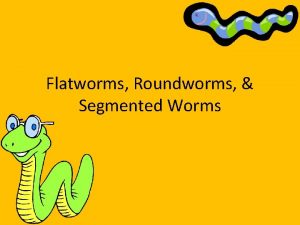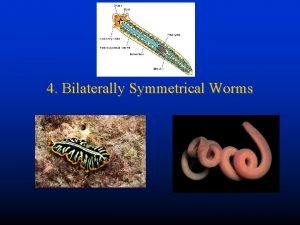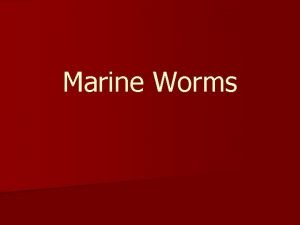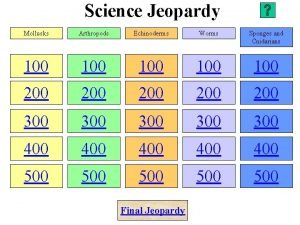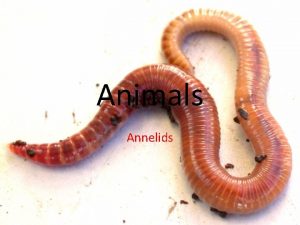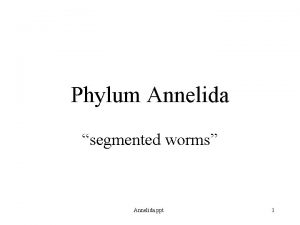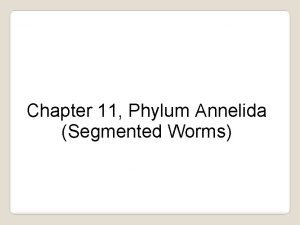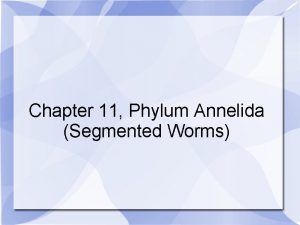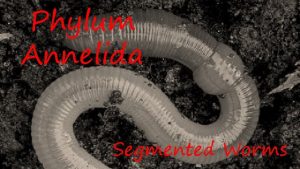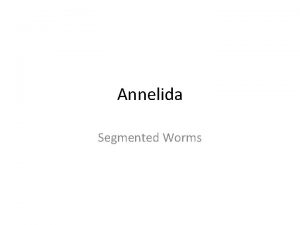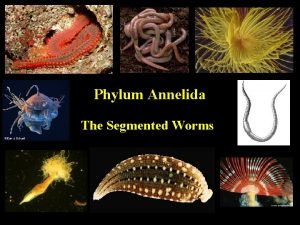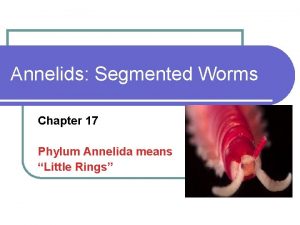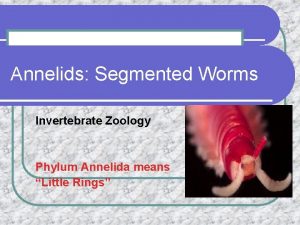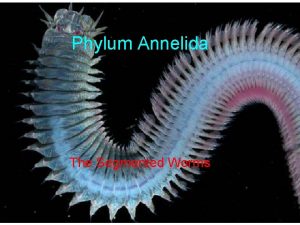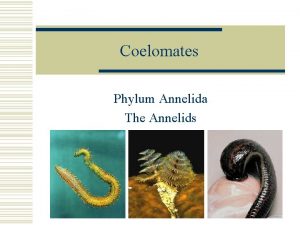Phylum Annelida The Segmented Worms Characteristics of Annelids















- Slides: 15

Phylum Annelida The Segmented Worms

Characteristics of Annelids • Symmetry: Bilateral • Level of Organization: Organ • Body is divided into segments called metameres • Each is separated by a septum • Each acts as a hydrostatic skeleton • Each has longitudinal and circular muscles • Each usually has one or more bristles (tough hairs) called setae

Nervous System • A brain connected to a pair of ventral nerve cords Circulatory System • Closed circulatory system • the blood is always within blood vessels • Several hearts (5 in earthworms) are used to pump blood through the closed circuit

Excretory System • Paired metanephridia in each segment • Excretory tubes remove waste and open to the outside with pores Digestive System • Different along the length of the body

Reproductive System • Most are hermaphroditic • Cross-fertilization àtwo worms fertilize each other • Marine worms release eggs and sperm into the water by mass spawning

Class Polychaeta ("many bristles”) • Each segment has parapodia used in locomotion • Parapodia contain a large number of setae

• Head end has sensory and feeding structures (some have jaws)

• Some live in protective tubes and use filter feeding

• Other polychaeta are tube dwellers underground

Class Oligochaeta ("few bristles") • Earthworms • No sensory structures • Gas exchange occurs across the body wall • Each segment has one or more pairs of setae used in locomotion

• Digestive tract shows specialization: • mouth • pharynx • crop (food storage) • gizzard (grinding) • intestine - for digestion and absorption

Earthworm Reproduction • Hermaphroditic, but exchange sperm 1. Worms stick together by their head ends 2. Clitellum secretes a mucus tube that serves as a cocoon 3. The cocoon moves down the worm and eggs and sperm are put into it (they give sperm to each other) 4. Cocoon eventually slips off the head end of the worm 5. Later, young worms hatch from the cocoon

Class Hirudinea (leeches!) • Flat body • Two suckers, one at each end • No Setae

• Most are active predators • Some are the parasitic, bloodsucking forms. • Blood suckers have blade like jaws • They secrete a powerful anticoagulant (stops blood from clotting) and anesthetics (so you don’t feel the bite)

Medical Uses of Leeches • Leeches can be useful in re-attaching fingers and helping blood flow • Traditional medicine thought they removed “bad blood”
 Anatomy of an earthworm
Anatomy of an earthworm Annelida
Annelida Phylum annelida consists of unsegmented worms.
Phylum annelida consists of unsegmented worms. Phylum annelida consists of unsegmented worms.
Phylum annelida consists of unsegmented worms. Segmented worms characteristics
Segmented worms characteristics Characteristics of segmented worms
Characteristics of segmented worms Metamerism and tagmatization slideshare
Metamerism and tagmatization slideshare Mollusks
Mollusks Chapter 25 worms and mollusks worksheet answers
Chapter 25 worms and mollusks worksheet answers What are some invertebrates
What are some invertebrates Flatworms roundworms and segmented worms
Flatworms roundworms and segmented worms Bilateral symmetry worm
Bilateral symmetry worm Marine flatworm symmetry
Marine flatworm symmetry Chapter 27 mollusks and segmented worms answer key
Chapter 27 mollusks and segmented worms answer key Section 27-1 flatworms
Section 27-1 flatworms Glasgow thang điểm
Glasgow thang điểm
